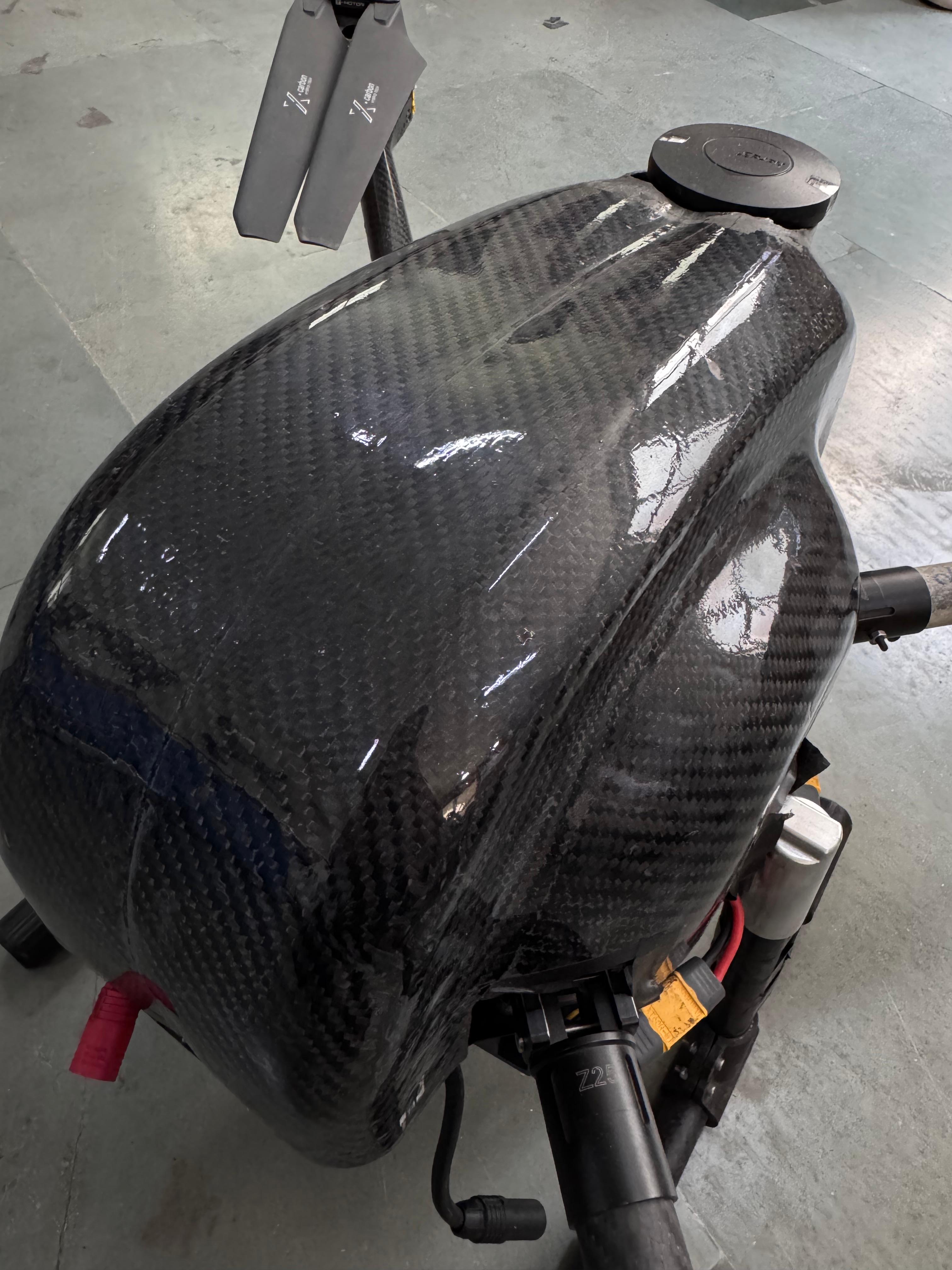Recommended Epoxy for UAV Carbon Fiber Parts:
Low-viscosity, high-performance epoxy systems are ideal. They help you achieve minimal resin usage while still fully wetting out the fibers.
Great Choices for UAVs:
Sicomin SR8500 with SD8605 hardener
Lightweight system ideal for vacuum and pressure cure; very low viscosity, perfect for thin laminates.
Araldite LY 1564 / HY 956
A high-performance epoxy system for prepreg or infusion, with good thermal and mechanical properties.
Hexion MGS RIMR 135 / RIMH 137
A popular aviation-grade epoxy for UAV and glider structures, low density with excellent bonding.
Best Carbon Fiber Weave for UAVs:

2x2 Twill Weave
Why: Good balance between drapability and stiffness. Lightweight, easy to work with, and strong.
Use for: Wings, fuselage skins, fairings.
Unidirectional Carbon Fiber (UD)
Why: Allows fibers along load paths—ideal for spars, booms, structural beams.
Use for: Wing spars, tail booms, internal frame elements.
Hybrid Layup (Twill + UD)
Why: Combines twill outer skin with UD inside for strength and stiffness.
Use for: Critical UAV components where strength, stiffness, and weight are all equally important.
Key Manufacturing Methods Explained:
Hand Lay-Up + Vacuum Bag
Manual placement of dry or wet plies, bagged under vacuum to consolidate and remove air. Great for flexible or small-production parts.
Prepreg + Autoclave
Factory-impregnated fabric with exact resin content, cured under heat and pressure for optimal fiber volume and minimal voids.
RTM (Resin Transfer Molding)
Dry fiber preform placed in a closed mold; resin injected under pressure—good for high-volume, thick, impact-resistant components.

Material Combination Table
| Application / Load Case | Tow Size | Weave Pattern | Epoxy System | Manufacturing Method | Why This Combo Works |
|---|---|---|---|---|---|
| Morphing Surfaces | 3K | 2×2 Twill / Bias-cut | West 105/206 | Hand lay-up + vacuum bag | Allows controlled flex; vacuum bag squeezes out excess resin. |
| High-Strength Bending | 6K | UD core + Twill skin | Araldite LY 1564 | Prepreg + autoclave | Tight fiber volume and max compaction. |
| Circular / Tubular Sections | 3K or 6K | Plain or Twill | Sicomin SR8500 + SD8605 | Filament winding or mandrel lay-up + vacuum bag | Uniform thickness, void-free walls. |
| Damping / Vibration Zones | 3K + Kevlar hybrid | Twill or Basket Weave | Slightly flexible epoxy | Wet lay-up + vacuum bag | Kevlar absorbs vibration; vacuum compacts plies. |
| Fatigue Resistance | 6K | UD + Twill or Plain | RIMR 135 | Prepreg + autoclave | Low void content, consistent layup. |
| Impact Loads (Landing Gear) | 12K or 6K | Basket Weave / Satin | Hexion 5052 | RTM or Prepreg + autoclave | Toughness from thick parts or compacted prepreg. |
| Torsional Loads | 6K or 12K | ±45° UD layup / Twill | Araldite LY 556/951 | Prepreg + autoclave | Diagonal shear fibers locked with high fiber volume. |